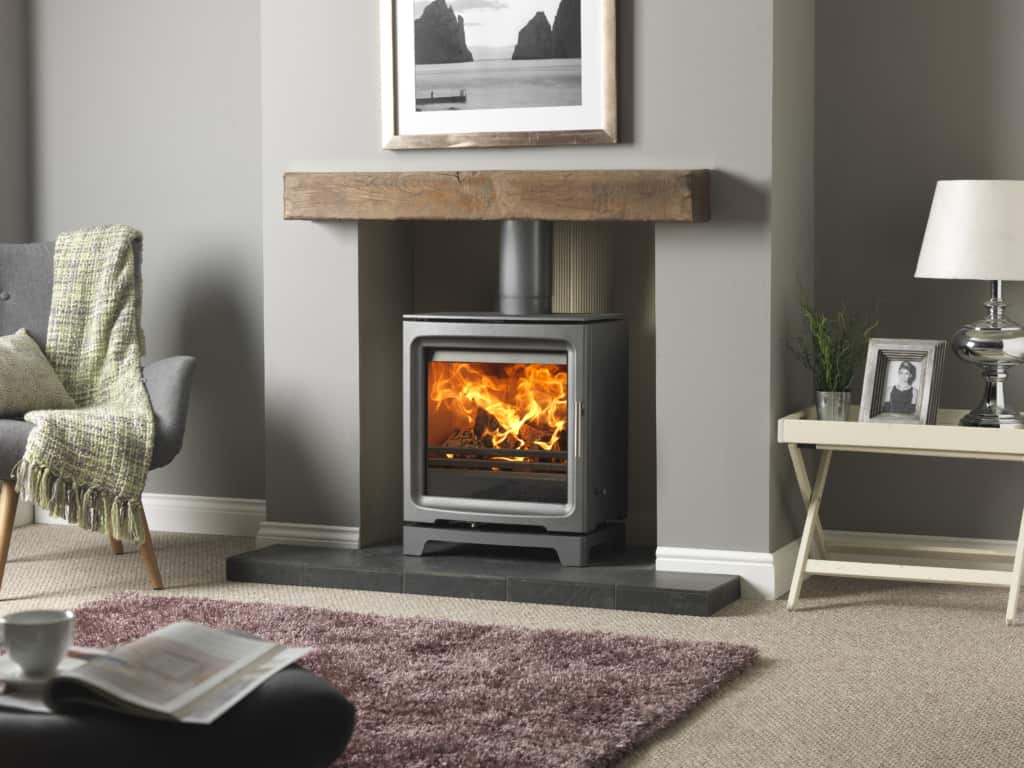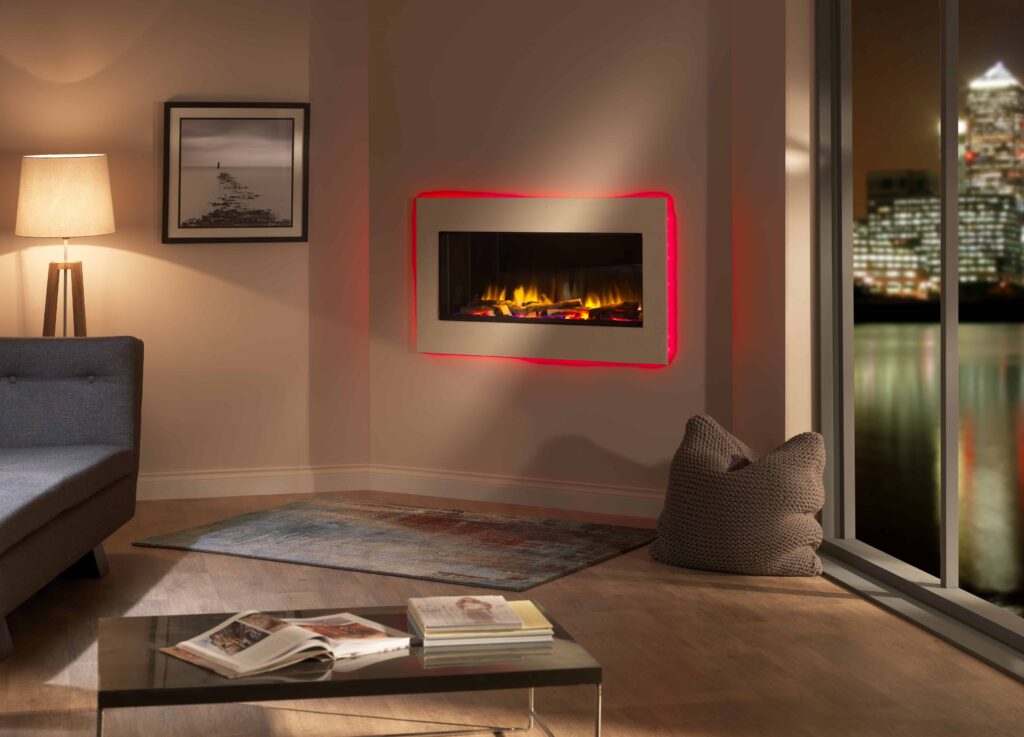Since the skyrocketing gas and electric bills of 2022 took hold due to, in part, the Russian invasion of Ukraine, more people have been looking at alternatives to traditional energy to heat their homes, which has created an ongoing debate. Which is best? A wood-burning stove or traditional central heating?
For some homes, there is no comparison – it is simply not feasible to heat a home with a stove. But for other homes, this is possible, even as a supplementary heating source.

Five Reasons Why You May Consider a Stove:
1. Wood doesn’t cost anything. Although you will need to buy packaged logs, gathering your own firewood is always an option – just check you’re not taking wood that belongs to someone else and that you season the wood before burning.
2. Burning wood is a renewable energy source. In fact, burning wood on an ecodesign stove can emit less CO2 than leaving it to rot naturally on a forest floor!
3. You enjoy total independence from the fluctuations of global markets – Back in 2022, the Russian invasion of Ukraine caused huge spikes in the price of electricity and gas. As we have mentioned, more people than ever before want to regain control over their heating costs.
4. Wood-burning stoves can increase your house price. This very much depends on your home and the stove you have fitted, but in many cases, a wood-burning stove can increase the value of your home, not to mention its desirability.
5. That wonderful flame – Nothing beats the look, sound and smell of burning wood. There is something magical about it, especially so on a cold winter’s night.
As much as we love the advantages that wood-burning stoves bring. They are certainly not a perfect solution to the pains of electric and gas prices. Firstly they are generally only designed to heat one room. While some stoves have been built into a home’s heating system, this is certainly not common. Secondly, a little work is involved in starting a fire and then cleaning it afterwards. Some people love this, but for others, it’s a chore. You also need to source your own firewood too and make sure it’s correctly seasoned.

Central Heating:
One huge advantage a traditional oil/gas or electric central heating system has over burning wood is that it’s a system designed from the outset to heat an entire house, whereas a wood-burning stove is designed to heat one room, unless it’s one of the rare installs which heats the central heating system.
Central heating has two main setups:
Conventional boiler: this heats up hot water and pumps it around your radiators. It usually heats hot water for your taps in a separate cylinder.
Combi boiler: A combi system heats up hot water for taps on demand. There is no storage cylinder, and it heats and pumps water to your radiators, too – hence the name “combi”.
Air Source Heat Pump: These are still a very new way to heat a home, in the UK at least. They transfer heat from outside air to a fluid; this fluid then moves through a heat pump to make hot water. This hot water, like with conventional and combi boilers heats the radiators and taps.
So how do both compare? Here are a few considerations:
Cost and Installation costs – For a wood-burning stove, this can be anything from £2,000 to £6,000+ depending on the model you want and if there is any additional work needed to fit. With a gas central heating unit, it can cost anywhere between £2,000 and £4,000. For an oil boiler, it can be a little more. With an Air Pump, it’s usually around £12,000, but this can vary a great deal based on your home size and location. There are too many variations in price here to give a definitive winner.
Running Costs – Wood costs around 30% of the cost of electricity and 13% cheaper than gas. From this point, wood is the clear winner.
Maintenance – Wood-burning stoves are relatively simple but do need regular chimney cleaning. A gas and oil boiler will need an annual service and, due to their more complex nature, are more likely to have technical issues, especially as they get older. Due to simplicity, wood comes out on top here.
Convenience – Wood-burning stoves require a degree of work in making sure wood is correctly seasoned and that it’s lit correctly, and that the necessary fuel is added regularly. You need to be hands-on. Ideal for some, but not so much for others. With central heating it’s a lot more simple and convenient. With this respect, central heating wins here.
Can they work together?
Yes – what a number of households do is stick with traditional central heating but also combine this with a wood-burning stove. Having a warming stove in the living room allows a household to drop the temperature of the central heating around other parts of the house that are not in use, so it’s just warm enough to get up to bed. You certainly don’t want to be freezing, but equally, you may not wish to heat rooms you’re not in. According to the Energy Saving Trust, you can save £80 a year for every 1C reduction in thermostat temperature.
So what’s best?
There is no winner here, and for good reason. You need to consider these points and then make an informed decision. For some, it’s wood all the way; for others, it’s traditional central heating.








